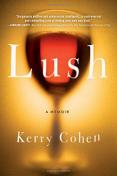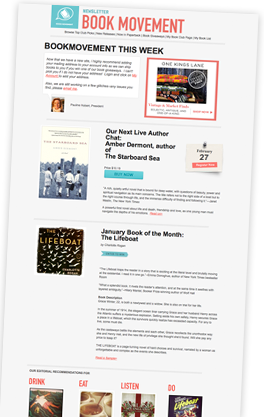BKMT READING GUIDES
Lush: A Memoir
by Kerry Cohen
Paperback : 240 pages
0 club reading this now
0 members have read this book
Introduction
When Loose Girl author Kerry Cohen reached her early 40s, she realized she had a drinking problem. Yes, she could get up on time, bring her kids to school, make dinner, chat with friends, and all around have a normal day, but, throughout it all, Kerry was waiting for her five o'clock glass of wine. Maybe two glasses. Maybe a bottle. Just enough to blur the edges of her life that had become a monotony of vacuuming, carpooling, and disagreements with her husband. Kerry had replaced one addiction with another, instead of seeking sex she was seeking merlot. Instead of intimacy, she craved the fuzziness of a nice buzz.
What she also realized was: she wasn't the only one.
LUSH is a gripping memoir that examines Kerry's struggle with alcohol, a struggle that a rising number of middle-aged women are facing today as alcohol dependency amongst females drastically increases. A wonderfully poignant and relatable follow up to her memoir Loose Girl, LUSH follows Kerry as she attempts to rediscover the awe in her life, leaving past mistakes, regrets, and the bottle behind.
Excerpt
I sometimes drank in the mornings. “Sometimes” is vague. It might have been often. I mean, relatively often. Compared to most people. I would say I drank too many times in the mornings, because pretty much anytime you’re drinking in the morning, it’s too many times. I called this breakfast wine. Breakfast wine is found in glasses from the night before. If it’s not in your glass from the night before, you might find it in someone else’s glass. Very rarely, you will find it in a not-quite-empty bottle. If you’re a real alcoholic, you won’t find it in your own glass, because alcoholics don’t leave alcohol in their glasses. I once heard that a critic condemned the award-winning movie Ironweed because in one scene, Meryl Streep leaves alcohol in her glass at the bar, and this, according to the critic, is something no alcoholic would ever do. Incidentally, because I had plenty of times left wine in my glass before bed, I hoped this was one more piece of evidence that I wasn’t a true-blue alcoholic. Breakfast wine’s primary purpose was to ward off the emotional doldrums that inevitably showed up the day after heavy drinking because, surprise! Alcohol is a depressant. We know this! When you’re drinking too much, people often remind you that drinking is likely adding to your depression. It slows your reflexes, slurs your speech, and makes you miserable. Not the night before, of course! Not while you’re yelling at the karaoke jockey that you are entitled to one more song before they close because everyone else got to go once more and you didn’t. Not while you’re singing “Barracuda”—badly—while the DJ, bartender, one server, and your last remaining friend wait so they can just go home and get some sleep. But the next morning, yes. The next morning, you remember how you humiliated yourself and you really need to stop drinking, but first this breakfast wine so you can feel better right now. Right now is every addict’s favorite time. I wasn’t the only one behaving badly. Plenty of my friends were as eager as I was to drink. My friend Hannah and I came up with Wine Wednesdays. Hannah and I met through a mutual friend, and we quickly and easily grew close. We were both extroverted. We both loved to chat while drinking and smoking. We often invited other women to join us, and they regularly showed up. We met on an outdoor patio at four in the afternoon, because this is Portland, where apparently no one works nine-to-five jobs. Our other friends had one glass and no cigarettes, and they were gone by 5:30. But Hannah and I stayed there through at least two more of both. Usually more. Whenever I’d go to meet friends for “a drink,” I said to Bob, “See you in an hour or so.” “Ri-ight,” he answered. When Hannah and I drank, we came up with ideas we thought were fantastic. One of our first was Zombie Apocalypse: The Musical. Another was a female cover band of Tenacious D, called Tenacious V. Our last was a web series about two single, middle-aged women trying to meet men. In it, we would play our worst selves. My character would be a pathetically desperate woman who just wanted someone to love her. Hannah’s would be a woman who talked endlessly to men about herself while they tried to get away. We’d pretend to be drunk the whole time, of course. We didn’t follow through on any of them. For our web series, Hannah had this idea that her character would call mine after waking up in the morning. “What are you doing today?” she’d ask my character. “I don’t have to work.” “I don’t have to work either,” I’d say. There would be a beat. Then, in unison, “Day drinking?” We didn’t need our characters to play out those scenes. We had become our worst selves. Back then, I had counseling clients only on Tuesdays and Thursdays, and on the other days, I should have been writing. Instead, I drank. Fuck it. Nothing ever came to anything anyway. Every free day was an excuse to have fun, and having fun meant drinking. We started at one of the few bars with smoking patios that opened before noon. We knew which ones they were: Beulahland, Lucky House, Bye and Bye, and a bunch of dive bars we loved. Conversation started with laughter, but as the day progressed, creeping toward 3:00 and 4:00 p.m., we’d head into dangerous terrain, which for me was anything to do with Bob. It wasn’t just that my friends saw my struggle with him. At least one thought he was self-involved, and he had been outright nasty to a few. What are you doing with him? they all wanted to know. I said: That’s what I’m trying to find out. That’s why I’m not ready to leave. These conversations went nowhere. I’d wind up crying, a sloppy drunk who cried in bars, for God’s sake. Like a sorority girl. Like a freshman in college. Like the drunk I had become.Discussion Questions
On page 23, Kerry writes, “Addiction specialists say that everyone has either a problematic relationship to alcohol, a controlled relationship to alcohol, or no relationship to alcohol.” What is your relationship to alcohol? Has it changed over time? Why do you think that is?Kerry makes clear that prior to this time in her life, she hadn’t been a drinker, and she believed this might be evidence that, while she had a drinking problem now, she could someday have a normal relationship to alcohol again. Do you agree? Why or why not?
Throughout the book, Kerry notes that it’s women, especially middle-aged women, who seem to be drinking more around her. Why do you think this might be?
Kerry notes that the story she tells about Bob is simply the ‘she said’ part of what happened. Can there be more than one story? Is one story more ‘true’ than another?
Kerry writes about addiction as resembling a balloon that bulges out with other types of addictions when one is pushed down. Do you have a “balloon” of addictions? What’s inside your balloon?
Kerry came to believe that her drinking was a symptom of her real addiction – sex and love. What do you think about this?
The Rat Park study by Bruce Alexander is described on page 82. How does this study apply to your life or to people you know?
On page 102 Kerry references Lidia Yuknavitch’s quote, “I’m not the story you made of me,” referring to the way we make sense of our lives. What stories do you have about yourself? Are they yours, or were they made up about you by others, or by society?
Kerry writes of addiction, “It is a deeply layered spiritual problem. It is a human problem” (page 106). Discuss this idea.
Life did not suddenly get better after Kerry stopped drinking heavily. If you are in recovery from an addiction, what was your experience? What did you think was going to happen versus what actually happened?
Book Club Recommendations
Recommended to book clubs by 0 of 0 members.
Book Club HQ to over 90,000+ book clubs and ready to welcome yours.
Get free weekly updates on top club picks, book giveaways, author events and more








